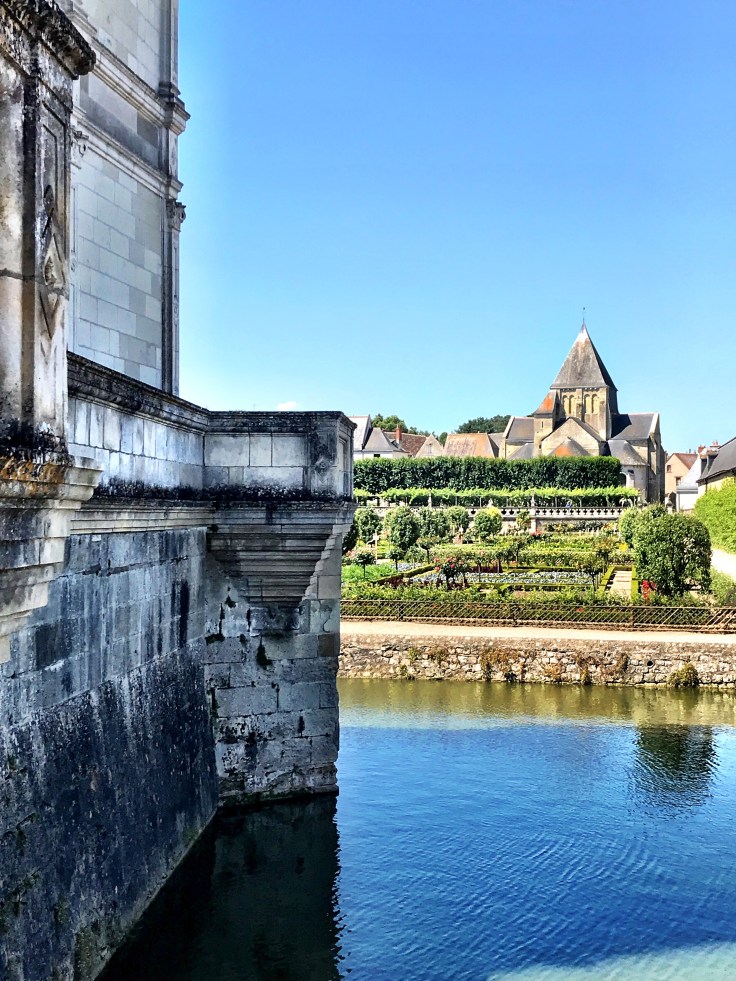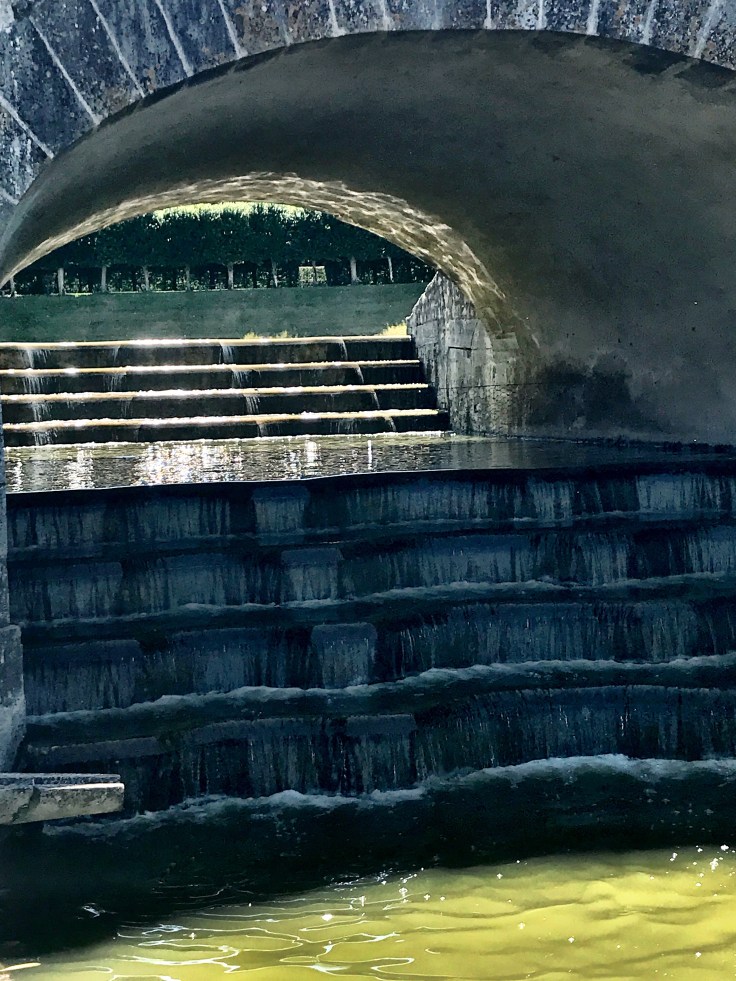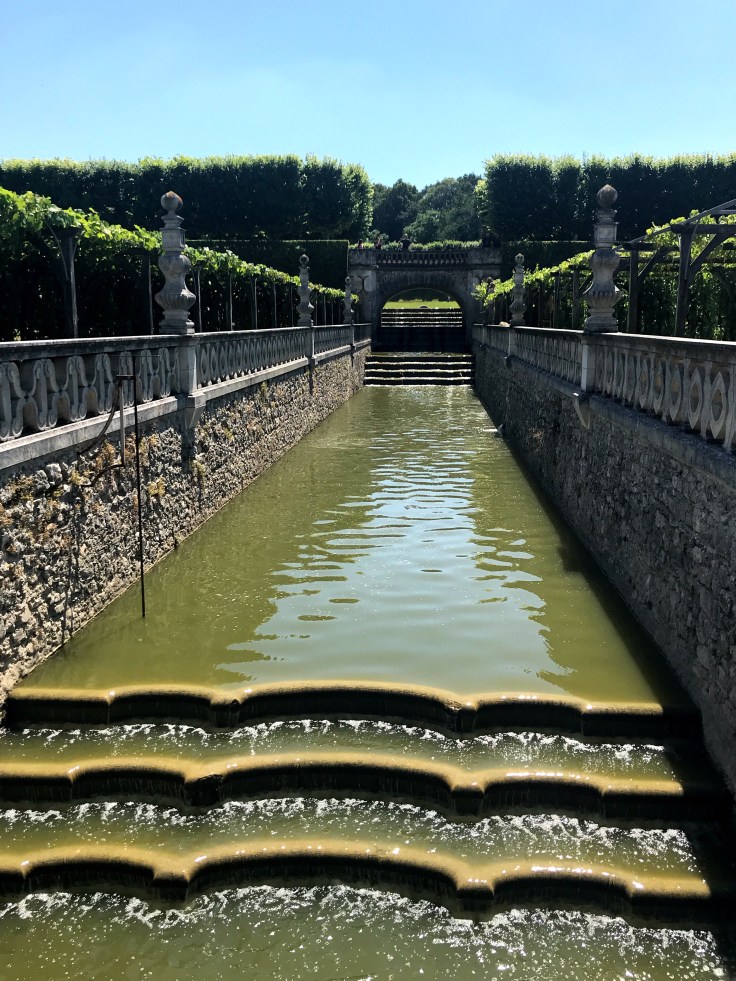 If you would like to know how a great Renaissance garden looked like, this is the place to go. The castle and gardens of Villandry have world fame, but it’s only in the 20th century the Renaissance gardens were restored and extended. The castle of Villandry was one of the last great Renaissance castles built in the Loire region. On this spot King Henry II of England admitted his defeat before King Agustus of France in 1189. The old fortress was destroyed, except for the keep, that was kept in remembrance of this peace treaty. When Jean Le Breton built the castle in 1532, he also laid out some stunning gardens. When Marquis of Castellane bought the castle and its grounds a lot of things changed. The castle and gardens were brought in line with new trends.
If you would like to know how a great Renaissance garden looked like, this is the place to go. The castle and gardens of Villandry have world fame, but it’s only in the 20th century the Renaissance gardens were restored and extended. The castle of Villandry was one of the last great Renaissance castles built in the Loire region. On this spot King Henry II of England admitted his defeat before King Agustus of France in 1189. The old fortress was destroyed, except for the keep, that was kept in remembrance of this peace treaty. When Jean Le Breton built the castle in 1532, he also laid out some stunning gardens. When Marquis of Castellane bought the castle and its grounds a lot of things changed. The castle and gardens were brought in line with new trends.
A new chapter started when the Carvallo family, still the current owners, bought the castle in 1906. He restored the castle back in their Renaissance glory. The gardens in English style were not to Carvallo’s liking and he decided to restore also the gardens in the original style. He used archaeology and old plans and descriptions to find clues of the original Renaissance gardens. But it was never the idea to replicate the original gardens, but to use those plans as a base to reinvent them. Carvallo’s descendants still take good care of the gardens and even added a herb garden in 1970 and a beautiful sun garden in 2008. Another big chance, although not visible, is the decision to go organic in 2009, making it a true environmental friendly space.

When you visit the castle first you will enter the gardens from above and start of in the wood. that grants you a beautiful outlook on the gardens. It’s a real delight to see the well manicured and formal gardens peeping through the wilderness of the forest. And one of the first gardens you can admire from above is the formal garden, also called the love gardens. Strong geometric shapes depict different types of love : Tender Love, Passionate Love, Flighty love and Tragic love. In an amazing example of topiary you can see hearts, daggers, broken hearts and so on. Full of symbolism this garden is a great example of what is called the Andalusian Style.


A bit further you enter the water garden. A rather minimal sunken garden, where a large pond dominates the whole area and some smaller fountains are set in a formal setting.

From the Water garden you arrive in the Sun garden, one of the most recent additions to the garden. It’s the current owner who reproduced this garden based on his great-grandfather’s design. Although the structure is quite formal, the planting is completely in style with contemporary planting schemes. Perennials and grasses in an informal mix. The focal point of this garden is a star shaped ornamental pond. Although the rest of the gardens are quite impressing, this part of the garden was one of my favorites.


When you found your way through the maze you arrive in another ornamental garden. This garden is in the same style as the Love gardens, but here music is playing the first violin. Large triangles represent lyres and harps and the whole is filled but beautiful shades of purples.


The largest chunk of the gardens and the most famous one is the Kitchen garden. Nine squares each have a different geometric motifs. The squares are filled with vegetables and flowers. An enormous impressive sight this is ! The influence here come from monastic kitchen gardens and Italian Renaissance gardens. Each year two plantings are made and the vegetables are constantly rotated in the patches to avoid pests and soil exhaustion.




You can spent quite some hours in Villandry and a nice shop and catering is provided at the entrance. A must for every garden enthusiastic !
Chateau et Jardins de Villandry : 3 rue Principale, 37510 Villandry, France
https://www.chateauvillandry.fr/en/



August 28, 2018 at 17:31
Great story about the Chateau and its gardens. Thank you.
LikeLiked by 1 person
August 28, 2018 at 23:37
Oh, I would love to visit this garden, but it’s so far away for me. Maybe one day! I would like the sun garden best too, I think. Your photos give the reader a wonderful comprehensive tour of the garden. Thank you.
LikeLiked by 1 person
August 29, 2018 at 10:10
Your enthusiasm really comes across. Like the formal vegetable gardens and the more carefree areas
LikeLiked by 1 person